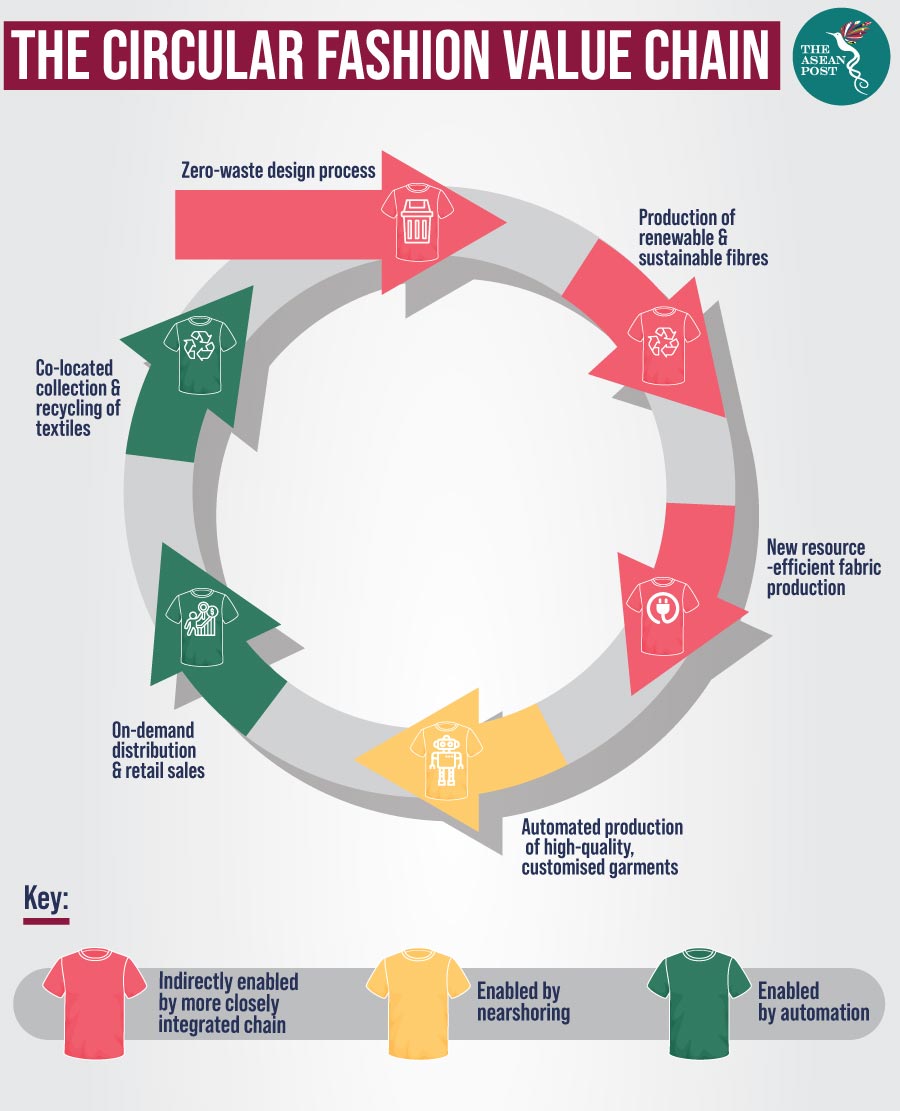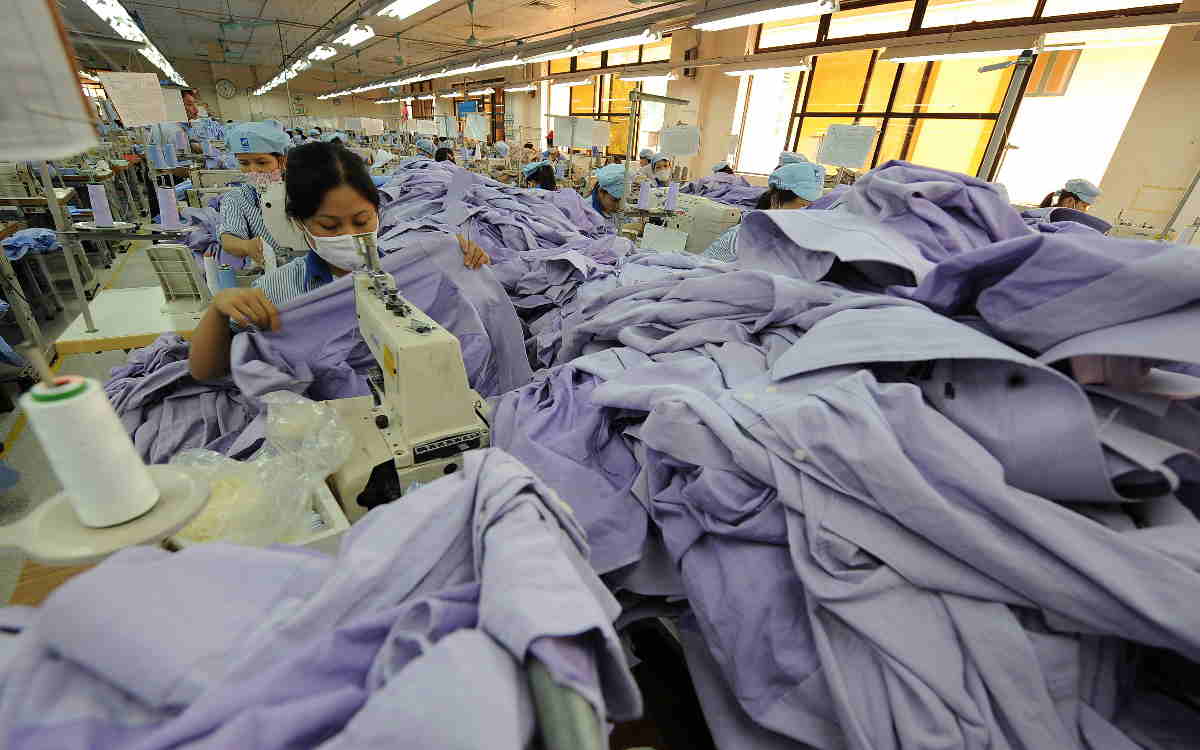The fashion industry’s desire to be on-trend drives its business operations by reducing collection periods and accelerating inventory turns. But high levels of consumption also mean a high level of waste. The younger generation is now demanding that companies work towards ethical practices, sustainable products and a transparent value chain.
According to a 2018 report by Re:newcell titled ‘We make fashion sustainable,’ 88 percent of trendsetters and consumers think that it is important that fashion brands tackle environmental issues.
Barely worn, rarely recycled
After the oil industry, fashion is the second most polluting industry globally. According to a 2017 report by the Ellen MacArthur Foundation, titled ‘A new textiles economy: Redesigning fashion’s future,’ every second, the equivalent of one garbage truck of textiles is landfilled or burned. The report estimates a value of US$500 billion is lost every year due to clothing being barely worn and rarely recycled.
Currently, the industry accounts for 10 percent of carbon emissions, more than the shipping and aviation industries combined. As textile waste decomposes it releases harmful greenhouse gases (GHG) that contribute to global warming, while dyes and chemicals in the fabric will leach into the soil contaminating rivers and waterways. Without changes to how textiles and clothing are produced, used and recycled, the industry will use up a quarter of the world’s carbon budget, by 2050.
Polyester, the second most common material used for clothing is derived from petroleum and textile production uses around 93 billion cubic metres of water annually. This huge amount of water is especially dangerous for drought-prone countries like Vietnam, which is among the world’s largest exporters of textiles and garments. The World Trade Organization’s (WTO) Statistic Review in 2017, reports that clothing exports from Vietnam to be worth US$27 billion, followed by Indonesia at US$8 billion and Cambodia at US$7 billion.
To reduce the environmental impact of fashion, some companies have responded by using recycled waste to make their fabrics, clothing take-back programmes and textile recycling innovations. And some are also working towards the goal of a circular economy or ‘circular fashion.’

Circular fashion is a term coined by Dr Anna Brismar, head of Swedish consultancy firm, Green Strategy. According to Dr Brismar, circular fashion refers to “clothes, shoes or accessories that are designed, sourced, produced and provided with the intention to be used and circulated responsibly and effectively in society for as long as possible in their most valuable form, and hereafter returned safely to the biosphere when no longer of human use.”
The Ellen MacArthur Foundation bases circular fashion on three principles: design out waste and pollution, keep products and materials in use and regenerate natural systems.
In essence, a circular economy for fashion implies that all materials and products are used for as long as possible, in an environmentally safe manner. Fashion products should be designed with high longevity, resource efficiency, non-toxicity, biodegradability, recyclability and good ethics in mind. Nearshoring – the practice of transferring operations to a nearby country – and automation could be important enablers in achieving a circular value chain.
In circular fashion, waste is another form of resource. If unfit for recycling, the biological material should be composted to become nutrients for plants and other living organisms in the ecosystem. Big Japanese and Swedish fast fashion brands, Uniqlo and H&M, are leading the recycling movement where shoppers can drop off textiles and clothing that they no longer use to be recycled. H&M has also pledged to use 100 percent recycled or sustainably sourced materials by 2030.
Raising awareness
There are a growing number of companies in Southeast Asia exploring the potential of circular fashion. Singapore-based Style Theory is a fashion rental service that allows consumers to rent a dress, wear it to an event and return it later, hassle-free.
MoreLoop Thailand, a company created by entrepreneurs, Amm and Amorpol, aims to promote the use of deadstock fabric through connecting factories with buyers for their waste fabric.
Kloth Cares in Malaysia initiated its fabric recycling movement in 2016, with the theme ‘Keeping Fabrics Out of Landfills’. They estimated that Malaysians produce almost 2,000 tonnes of textile waste a day. By 2017, they collected over 18,000 kilograms (kg) of various types of fabric. They are now aiming to collect 188,888 kg of fabric by the end of 2019.
Another initiative is the Fashion Revolution which is a global movement aimed at raising awareness of the fashion industry’s most pressing issues. The movement now has coordinators in nine Southeast Asian countries, providing a rallying point for those who are passionate in growing the effort.
Malaysian coordinator for Fashion Revolution, Sasibai Kimis, said that “based on popular media coverage, it does seem like there is greater consumer awareness on the issues of social justice in the garment sector.” But she feels that public awareness of ethical fashion issues is still in its infancy in Malaysia. “Most producers, designers, and consumers have not even been exposed to the idea of questioning who made their clothes and under what conditions.”
Fashion doesn’t have to be resource-intensive, wasteful and waste-generating. Collaboration among influential players such as big brands, fast fashion retailers, designers and manufacturers are key in the push towards circular fashion.
Related articles:
Fashion needs to get environment-friendly fast
